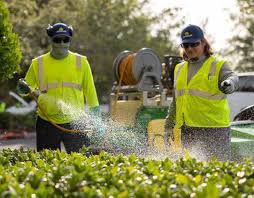This article explores Integrated Pest Management (IPM), pest outbreaks, and pest resurgence, focusing on their definitions, strategies, and implications for agricultural pest control.
Introduction to Integrated Pest Management in Agriculture
Integrated Pest Management (IPM) is an effective and environmentally sensitive approach to pest management that relies on a combination of common-sense practices. IPM programs use current, comprehensive information on pest life cycles and their environmental interactions.
This information, combined with available pest control methods, manages pest damage economically with minimal hazard to people, property, and the environment.
Read Also: Causes of Diseases in Farm Animals and How to Prevent Disease OutBreak
Defining Integrated Pest Management in Agricultural Systems

The IPM approach applies to both agricultural and non-agricultural settings, such as homes, gardens, and workplaces. IPM utilizes all appropriate pest management options, including judicious pesticide use.
In contrast, organic food production employs similar concepts but restricts pesticides to natural sources, avoiding synthetic chemicals.
IPM programs leverage detailed pest and environmental data to implement control methods that minimize economic and ecological harm.
Understanding Pest Outbreaks in Agricultural Contexts
A pest outbreak is an explosive increase in a particular species’ population over a short period, such as locust or armyworm attacks. In epidemiology, an outbreak is a sudden increase in disease occurrences in a specific time and place, affecting small localized groups or thousands across continents.
Four linked cases of a rare infectious disease may constitute an outbreak. Outbreaks include epidemics, typically reserved for infectious diseases, and diseases of environmental origin, like water or foodborne diseases, impacting regions or groups of countries.
Pandemics are near-global disease outbreaks. The terms “outbreak” and “epidemic” are often used interchangeably, though researchers like Manfred S.
Green propose restricting “epidemic” to larger events, as noted in Chambers Concise Dictionary and Stedman’s Medical Dictionary.
Steps for Managing Pest Outbreaks in Agriculture
The epidemiology profession, as outlined by the United States Centers for Disease Control and Prevention, follows widely accepted steps for investigating disease outbreaks, adaptable to agricultural pest outbreaks:
- Identify the outbreak’s existence (Is the number of affected organisms normal for the time and area?).
- Verify the diagnosis related to the outbreak.
- Create a case definition to identify included cases.
- Map the outbreak’s spread using information technology as diagnoses are reported.
- Develop a hypothesis on the outbreak’s cause.
- Study hypotheses through data collection and analysis.
- Refine the hypothesis and conduct further studies.
- Develop and implement control and prevention systems.
- Release findings to broader communities.
The order and effort in these steps vary by outbreak. Prevention and control measures, like promoting hygiene, are often implemented early, even before identifying the causative agent. In notifiable disease surveillance, linking reports to lab results simplifies diagnosis verification.
For unknown etiologies, diagnosis determination requires significant time and resources. Steps may overlap or repeat, with initial broad case definitions refined as knowledge grows. Active surveillance to identify additional cases is often included.
Read Also: Cutworms: How to Identify and Get Rid of Cutworms
Pest Resurgence in Agricultural Systems

Pest resurgence is the rapid reappearance of a pest population in damaging numbers, typically after broad-spectrum pesticide application kills natural enemies that keep pests in check.
A notable example in rice cultivation is the brown plant hopper (BPH). Without pesticides, BPH is controlled by natural enemies like mirid bugs, ladybird beetles, spiders, and pathogens.
Pesticides eliminate these beneficial organisms, allowing BPH populations to multiply rapidly, becoming a man-made pest.
Resurgence can be avoided by not spraying pesticides, but many farmers fail to recognize resurgence, spraying regularly upon seeing pests, unaware that spraying causes the problem.
Example of Spider Mite Resurgence in Agriculture
Spider mites are typically controlled by predatory mites. Pesticide use eliminates predatory mites, allowing spider mite populations to surge. Farmers often respond by spraying more to control spider mites, whereas stopping pesticide use would allow predatory mites to recover and manage the pest.
Resurgence can be easily avoided by not spraying pesticides, but farmers often misinterpret pest presence as a need for more spraying, exacerbating the issue.
Resurgence can be easily avoided by not spraying toxic pesticides, preserving natural enemies that control pest populations, thus maintaining ecological balance in agricultural systems.
Do you have any questions, suggestions, or contributions? If so, please feel free to use the comment box below to share your thoughts. We also encourage you to kindly share this information with others who might benefit from it. Since we can’t reach everyone at once, we truly appreciate your help in spreading the word. Thank you so much for your support and for sharing!

